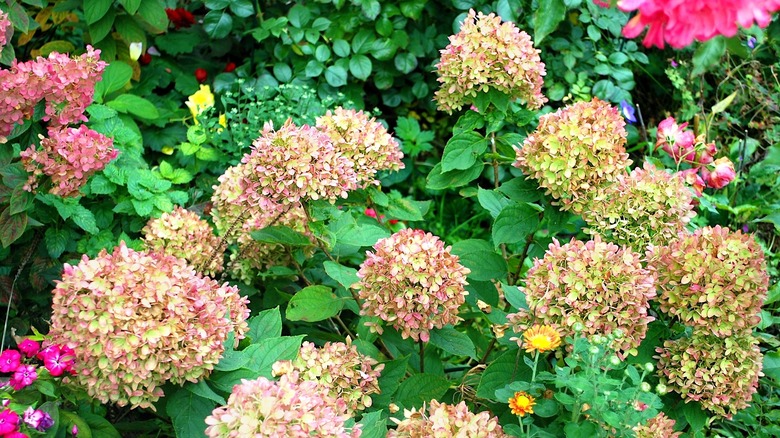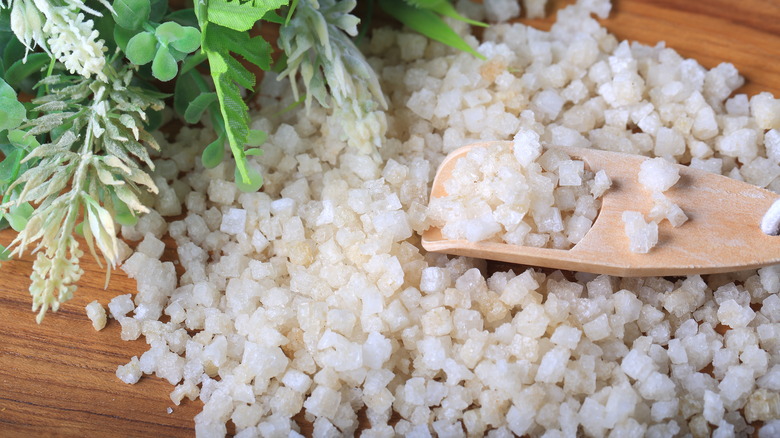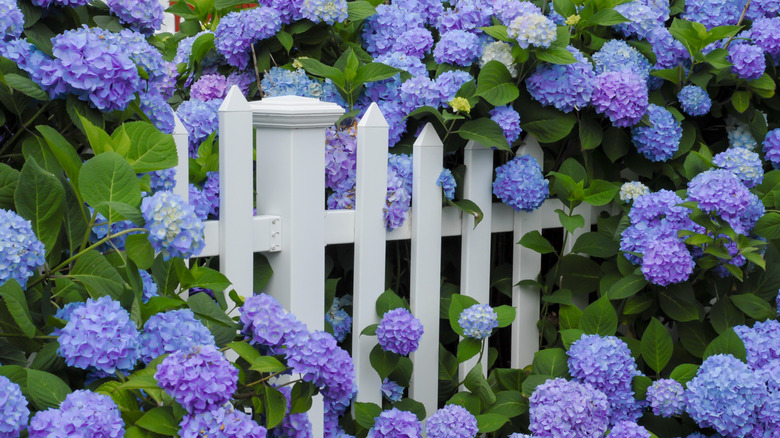Your Hydrangeas Will Flourish With The Help Of One Household Essential
Hydrangeas are a joy to have in any garden. Not only do they make a statement in your front yard or are a charming addition next to a patio, but they also add a pop of color. Where lawns and gardens tend to look overly green unless annuals are planted, hydrangeas give a boost of interest to a monochrome design. You can have everything from pink to blue to white blooms, allowing you to choose what's best for your specific home aesthetic. But sometimes, these blooms can look a little worse for wear when not taken care of properly, whether that means they droop to the ground or their colors look dull and uninspired. Luckily, Epsom salt can help with that.
That's right, the same bath staple that helps with achy muscles and joints can also help boost your hydrangea's health. It can help curb yellowing leaves, make them grow bigger and stronger, and even help change their colors. Curious how? Here's how to successfully use it in your garden.
How to do it
If you're sold on the benefits of Epsom salt, you'll be happy to hear it's very easy to apply to your garden. Generally, you want to use 1 tablespoon of Epsom with 1 gallon of water. If you have a lot of hydrangeas or a giant row of them, then measure out 1 tablespoon for every 9 square feet. Mix it thoroughly, and allow it to fully dissolve before heading outside to water your hydrangeas. Once the rock chunks have melted, take the bucket outside and water the ground with it, taking care not to splash leaves or blooms.
However, keep in mind you can also use too much and hurt your plants by creating a toxic buildup. That's why it's important to test your soil periodically to ensure the magnesium levels aren't too high. If you don't test it, you'll still know you've had too much of a good thing if you notice scorched leaves. If that's the case, stop watering it with Epsom and instead flush the area with clean water.
Why this works
Dumping your bath salts into the ground might seem odd, but your hydrangeas will reward you for it. The salt contains magnesium and sulfate, which are important compounds for any garden. They specifically aid in creating chlorophyll, which helps plants absorb energy from the sun. That means they also help with photosynthesis, which is how plants make their food. In this way, Epsom salt acts like a super-boosting vitamin, making the flowers stronger and more vibrant.
In addition to that, magnesium helps plants absorb more nutrients. This will result in more impressive blooms, making it act as a makeshift fertilizer. It will also help protect your plants from getting yellowing leaves since that's usually a sign of low magnesium. If you didn't think that was enough, Espom salt can also help make the soil more acidic, which is the type of soil that hydrangeas love the most. This can help change the color of your blooms since hydrangeas planted in acidic soil usually turn blue.


